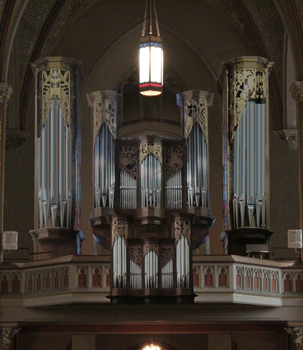
St. Francis de Sales Oratory, St. Louis, Missouri, has signed a contract for Karl Wilhelm Opus 123, a three-manual, 58-rank, freestanding mechanical-action organ. The Oratory supports a varied musical repertoire spanning several centuries, performed by ensembles including five choirs and an orchestra in residence. Liturgies are conducted in Latin using the Extraordinary Form of the Roman Rite. To finance the purchase and necessary updates to the existing infrastructure, the Oratory has launched a fundraising campaign for $400,000.
Previously installed in the First Presbyterian Church, Syracuse, New York, the organ contains 2,670 pipes in five white oak freestanding cases. The instrument replaces a three-manual, 22-rank organ from 1924 by the Wicks Organ Company of Highland, Illinois.
After studying possible transplant organs that might be appropriate, four were selected as finalists. Several considerations led in the direction of the Wilhelm instrument, including detail of the casework, traditional methods of construction and voicing, and the overall tonal design that harkens back to the German ancestry of the parish. The instrument is well suited, in particular, for Baroque music. Organbuilder Karl Wilhelm has agreed to come out of retirement to oversee the installation and voicing of this instrument. For information: www.institute-christ-king.org/stlouis-home/.

